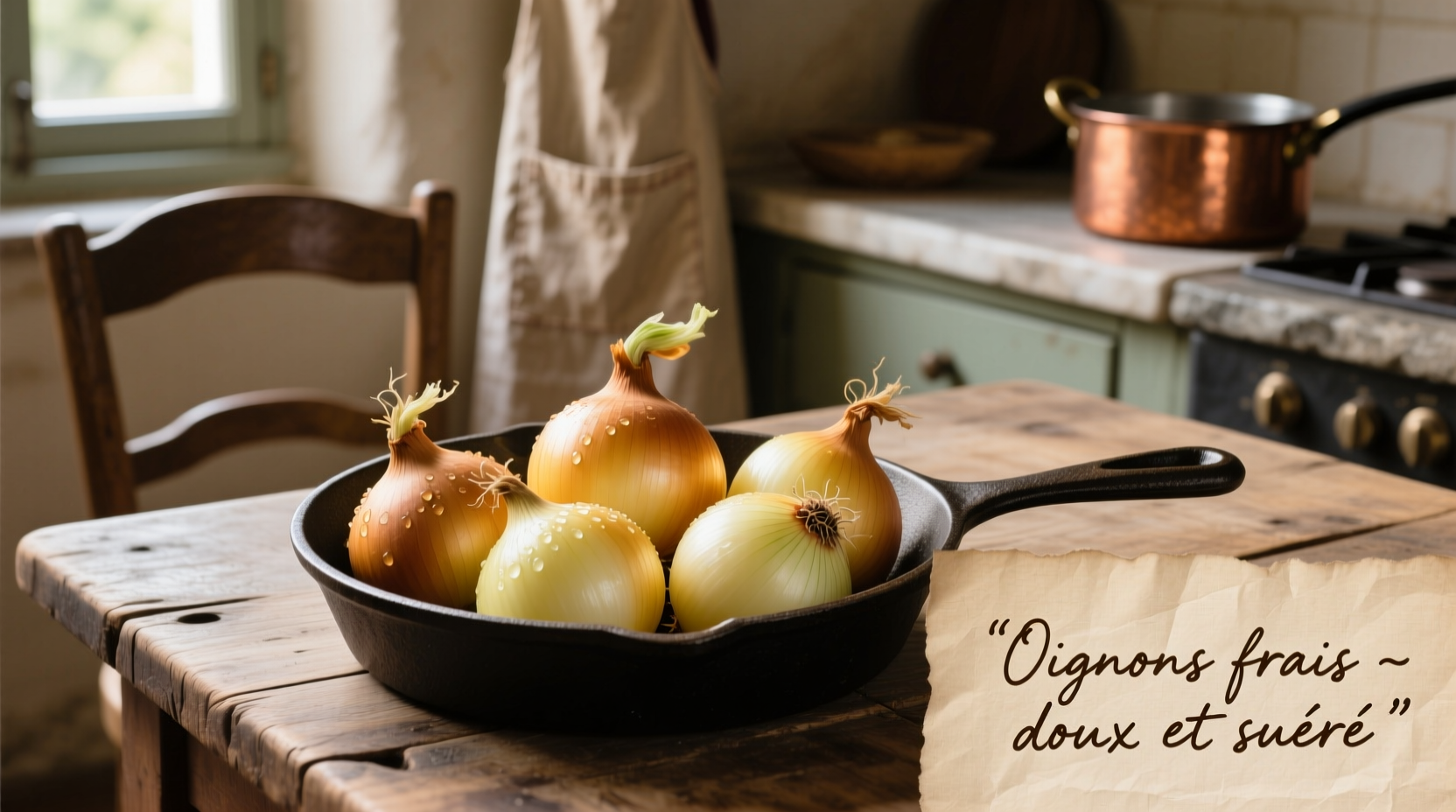Mastering 'Oignon': Your Complete Guide to Onions in French
Understanding how to say onion in French opens doors to authentic culinary experiences. Whether you're following a classic French recipe or shopping at a Parisian market, knowing that oignon refers to the common yellow onion prevents confusion and enhances your cooking accuracy. This seemingly simple translation carries cultural significance in French cuisine where onions form the essential base of countless dishes.
Pronunciation Made Simple
Properly pronouncing 'oignon' can be challenging for English speakers. The word is pronounced ee-nyon (IPA: /ɔ.ɲɔ̃/), with the 'gn' creating a distinctive nasal sound similar to the 'ny' in 'canyon' but with nasal resonance. Break it down:
- First syllable: 'oi' sounds like 'wa' in 'water' but shorter
- Second syllable: 'gnon' creates the 'nyon' sound with nasal quality
Listen to native speakers pronounce it by searching 'oignon pronunciation' on Forvo or the Cambridge Dictionary website for authentic reference.
| English Term | French Translation | Literal Meaning | Culinary Context |
|---|---|---|---|
| Onion | Oignon | N/A | Standard yellow onion for most recipes |
| Green onion | Cébette or Échalote verte | Little onion | Salads, garnishes, raw applications |
| Shallot | Échalote | Small onion | Vinaigrettes, delicate sauces, fines herbes |
| Red onion | Oignon rouge | Red onion | Pickling, salads, visual contrast |
Linguistic Evolution: From Latin to Modern French
The word 'oignon' has evolved significantly through linguistic history. Tracing its development reveals:
- Latin origin: 'unionem' (from 'unus' meaning 'one' or 'single')
- Old French (11th century): 'oignon' or 'oingnon'
- Middle French (15th century): Standardized spelling as 'oignon'
- Modern French: Retained the nasal 'gn' sound while English simplified to 'onion'
This linguistic divergence explains why English and French spellings differ despite sharing the same Latin root. The Académie Française has maintained the traditional spelling while English underwent simplification during the Middle English period.
Practical Usage in French Cooking
Knowing how to say onion in French becomes practical when following authentic recipes. In French culinary terminology:
- 'Émincer un oignon' = To finely chop an onion
- 'Caraméliser les oignons' = To caramelize onions
- 'Suer les oignons' = To sweat onions (cook gently without browning)
French chefs consider properly prepared onions the foundation of sauce mère (mother sauces) and countless regional specialties. The famous sofrito base in French cooking—mirepoix—combines diced onions, carrots, and celery as the flavor foundation for stocks, soups, and braises.

Contextual Usage: When to Use Which Term
Understanding the appropriate context for onion terminology prevents culinary mistakes:
- Oignon: Use for standard yellow cooking onions in most recipes
- Échalote: Required for delicate sauces like béarnaise where shallots provide milder flavor
- Cébette: Specifically refers to green onions/scallions in French markets
- Oignon rouge: Only when recipe specifically calls for red onions
Mistaking échalote (shallot) for oignon (yellow onion) can dramatically alter flavor profiles. Professional French chefs maintain that authentic coq au vin requires yellow onions, while boeuf bourguignon benefits from shallots for their subtle sweetness.
Cultural Significance in French Cuisine
Onions hold deep cultural significance across French regional cooking traditions:
- Provençal cuisine: Features salade d'oignons crus (raw onion salad) with olive oil and herbs
- Lyonnaise tradition: Famous for pommes de terre lyonnaises featuring caramelized onions
- Niçoise specialty: socca (chickpea pancake) often includes finely grated onions
- Norman dishes: tripes à la mode de Caen relies on slow-cooked onions for depth
The annual Fête de l'Oignon (Onion Festival) in Rosiers-d'Égletons, France celebrates this humble ingredient with onion soup competitions and traditional cooking demonstrations, highlighting its importance in French culinary heritage.
Common Mistakes to Avoid
English speakers frequently make these errors when using 'oignon' in French contexts:
- Mispronouncing as 'oh-ee-gnon' instead of the correct 'ee-nyon'
- Using 'oignon' when 'échalote' is required for specific recipes
- Forgetting that French recipes typically specify onion types precisely
- Overlooking regional variations in onion preparation techniques
Remember that in French culinary writing, precision matters. A recipe calling for 'deux oignons moyens' means two medium yellow onions, not a generic 'onions' measurement.
Practical Application Tips
Implement your knowledge of 'oignon' with these actionable steps:
- When shopping at French markets, ask for 'un kilo d'oignons jaunes' for yellow onions
- Follow classic French techniques like 'suer' (sweating) rather than sautéing onions
- Use the correct term in recipe searches: 'soupe à l'oignon' not 'onion soup'
- Practice pronunciation daily until 'ee-nyon' becomes natural
Mastering this fundamental term connects you to centuries of French culinary tradition where the humble onion forms the essential foundation of flavor development.











 浙公网安备
33010002000092号
浙公网安备
33010002000092号 浙B2-20120091-4
浙B2-20120091-4